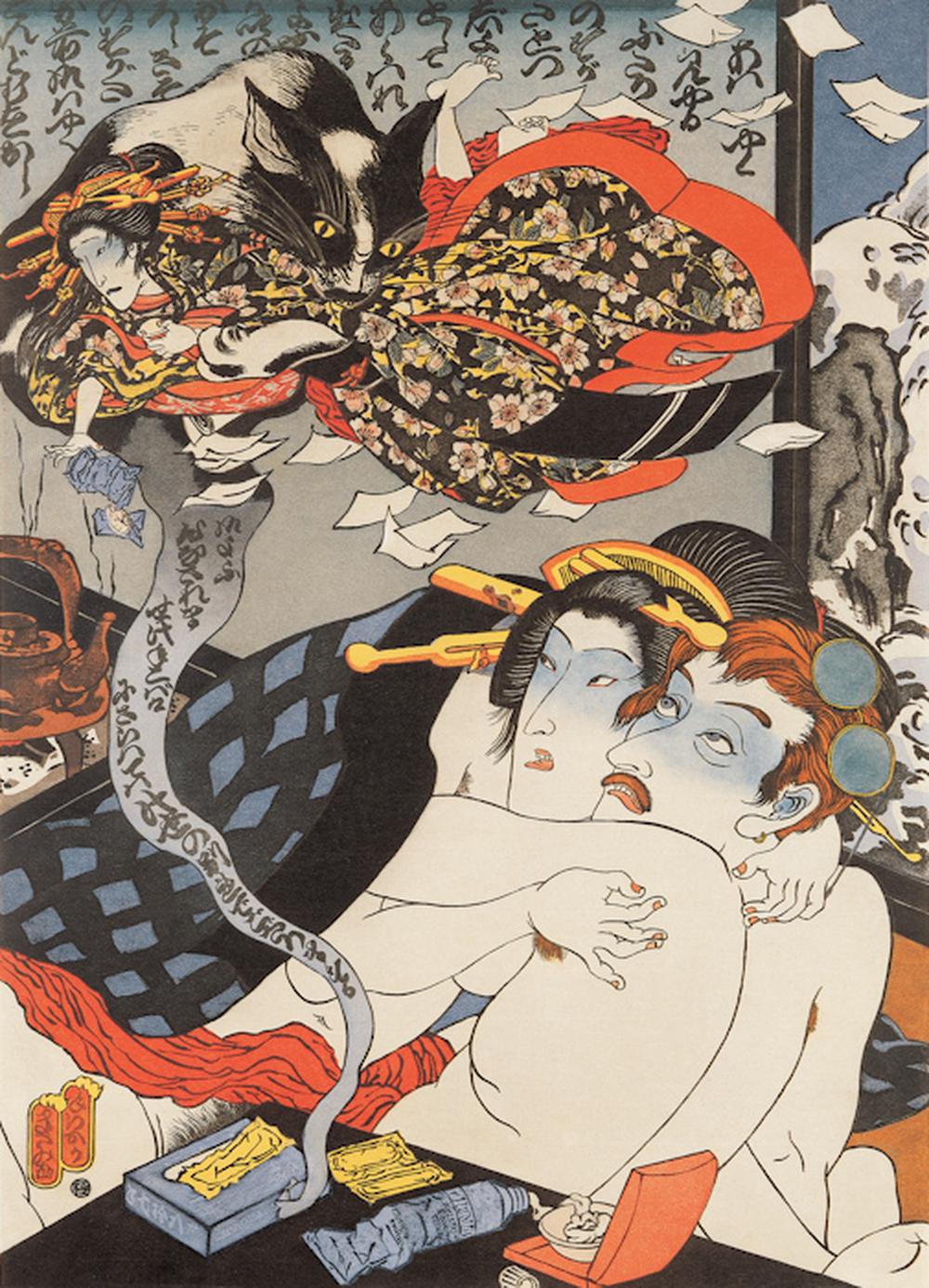Masami Teraoka. American Kabuki

Pop art and its critique of consumer culture resonated with Masami Teraoka. In 1970, after living in the United States for nearly ten years, he was ready to look back at his cultural roots, adopting ukiyo-e images—which he had encountered as a child in his grandparents’ collection—for the modern moment. These woodblock prints reflected Japan’s own consumer culture during the Edo period (1615–1868), fed by such interests as fashion, sex, and entertainment of an emerging class of affluent commoners. Teraoka used ukiyo-e aesthetic traditions—first in watercolor and later on large canvases as well as etchings—to address themes like environmental degradation, consumerism, race relations, and gender and sexuality. In the 1980s he developed a major series on the AIDS epidemic, creating images portraying the tragedy and universality of the crisis. Terrified samurai and geisha figures are haunted by ghosts while struggling with condoms. Drawing on characteristics of the Kabuki stage, sickly blue shadows tint their eyes ominously evincing death, and calligraphy—like that of the kabuki narrator’s script—warns of impending danger.1
Peter Selz, “Racism, Discrimination, Identity Politics,” Art of Engagement: Visual Politics in California and Beyond (San José, CA: San José Museum of Art, 2006), 221–22 ↩︎